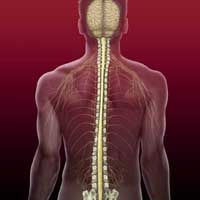Article
Using Transplanted Olfactory Mucosa Cells in Spinal Cord Injury Surgeries
Author(s):
Spinal cord injury surgeries using olfactory mucosa lamina propria showed improvements in patients at the 3 year follow up mark.

Patients treated for spinal cord injury (SCI) using olfactory mucosa lamina propria (OLP) transplants demonstrated modest improvements, according to research published in Cell Transplantation.
A global team of researchers aimed to determine whether OLP transplants promote regeneration and functional recovery in chronic human SCI by randomizing 12 subjects to OLP transplants (8 patients) or control sham surgery (4 patients). The subjects were examined using magnetic resonance imaging (MRI), electromyography (EMG), urodynamic study (UDS), American Spinal Injury Association impairment scale (AIS), and other functional assessments. The researchers commented that high levels of nerve growth factor and neurotrpohic receptor expression are typically demonstrated by autologous olfactory ensheathing cells (OECs).
The patients who underwent OLP transplants recovered more motor, sensory, and bladder function compared to the sham surgery patients.
“This study demonstrated that transplantation of OLP affected motor functional recovery as well as improvement in ASI A sensory scores, bladder compliance, sensation and partial control, and daily life activities,” the authors explained.
Three years after the OLP surgery, 1 patient improved from AIS A to C and another improved from AIS A to B. Another 2 patients recovered more than 3 segmental sensory levels, 2 had less spasticity, 2 had altered H reflexes and SSEP, 2 regained bladder and anorectal sensation and had better bladder compliance on UDS.
The OLP patients additionally had partial or complete tissues bridges at the injury site compared to the cavitary gaps in the sham surgery patients, the researchers continued.
“Optimal outcomes may be related to age, severity and level of injury, the quality and quantity of transplants, surgical technique, and post operative rehabilitation,” concluded the authors. “We believe that to derive clinical benefits from OEC transplants a combination with other pharmacological agents is most likely to achieve significant axon regeneration and reestablish functionally useful connections across the injured spinal cord.”
The editor in chief of Cell Transplantation explained the benefits of using OECs in a statement, highlighting the facts that OECs are easy to isolate and avoid ethical issues.
“They have similar properties as Schwann cells and can survive in the peripheral nervous system,” explained Dr. Shinn-Zong Lin, who is also the vice superintendent for the Center of Neuropsychiatry, and professor of neurosurgery at China Medical University Hospital. “A benefit of this study is that it was a randomized, controlled, double blind prospective study, unlike similar studies preceding it. Though the present study demonstrated that OLP transplantation can lead to motor and sensory improvement, more work is needed to optimize this observed functional recovery.”




